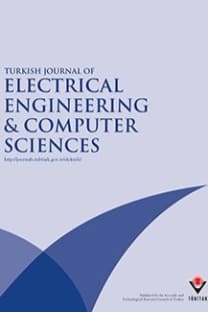Interaction Analysis of Multi-Function FACTS and D-FACTS Controllers by MRGA
Flexible AC transmission systems, distributed FACTS, static synchronous compensator, distributed static series compensator
Interaction Analysis of Multi-Function FACTS and D-FACTS Controllers by MRGA
Flexible AC transmission systems, distributed FACTS, static synchronous compensator, distributed static series compensator,
___
- F.D. de Jesus, E.H. Watanabe, L.F.W. de Souza, J.E.R. Alves, “SSR and power oscillation damping using gate- controlled series capacitors (GCSC)”, IEEE Transactions on Power Delivery, Vol. 22, pp. 1806–1812, 2007.
- N.G. Hingorani, L. Gyugyi, Understanding FACTS: Concepts and Technology of Flexible AC Transmission System, New York, IEEE Press, 2000.
- D. Divan, W. Brumsickle, R. Schneider, B. Kranz, R. Gascoigne, D. Bradshaw, M. Ingram, I. Grant, “A distributed static series compensator system for realizing active power flow control on existing power lines”, IEEE Transactions on Power Delivery, Vol. 22, pp. 642–649, 2006.
- D. Divan, “Improving power line utilization and performance with D-FACTS devices”, IEEE Power Engineering Society General Meeting, Vol. 3, pp. 2419–2422, 2005.
- H. Johal, D. Divan, “Design considerations for series-connected distributed FACTS converters”, IEEE Transactions on Industry Applications, Vol. 43, pp. 1609–1618, 2007.
- P. Fajri, D. Nazarpour, S. Afsharnia, “A PSCAD/EMTDC Model for distributed static series compensator (DSSC)”, International Conference on Electrical Engineering, pp. 1–6, 2008.
- M. Khalilian, M. Mokhtari, D. Nazarpour, B. Tousi, “Transient stability enhancement by DSSC with a fuzzy supplementary controller”, Journal of Electrical Engineering & Technology, Vol. 5, pp. 415–422, 2010.
- M. Mokhtari, M. Khalilian, D. Nazarpour, “Damping of low frequency oscillations in power system with distributed static series compensator (DSSC)”, International Review on Modeling and Simulation, Vol. 2, pp. 507–512, 2009.
- M. Khalilian, M. Mokhtari, S. Golshannavaz, D. Nazarpour, “Distributed static series compensator (DSSC) for sub-synchronous resonance alleviation and power oscillation damping”, European Transactions on Electrical Power, Vol. 22, pp. 589–600, 2011.
- R.M. Mathur, R.K. Varma, Thyristor-Based FACTS Controllers for Electrical Transmission Systems, New York, IEEE Press and Wiley Interscience, 2002.
- H.F. Wang, “Interactions and co-ordination of multiple-function FACTS controllers”, European Transactions on Electrical Power, Vol. 11, pp. 1–15, 2001.
- L. Zhang, P.X. Zhang, H.F. Wang, Z. Chen, W. Du, Y.J. Cao, S.J. Chen, “Interaction assessment of FACTS control by RGA for the effective design of FACTS damping controllers”, IET Generation, Transmission & Distribution, Vol. 153, pp. 610–615, 2006.
- H.F. Wang, M. Jazaeri, Y.J. Cao, “Analysis of control conflict between UPFC multiple control functions and their interaction indicator”, International Journal of Control Automation and Systems, Vol. 3, pp. 315–321, 2005.
- S. Ammari, Y. Besanger, N. Hadjsaid, D. Georges, “Robust solutions for the interaction phenomena between dynamic loads and FACTS controllers”, IEEE Power Engineering Society Summer Meeting, Vol. 1, pp. 401–406, 2000.
- L. Xianzhang, N. Edwin, Lerch, D. Povh, “Optimization and coordination of damping controls for improving system dynamic performance”, IEEE Transactions on Power Systems, Vol. 16, pp. 473–480, 2001.
- L. Jun, T. Guangfu, L. Xingyuan, “Interaction analysis and coordination control between SSSC and SVC”, International Conference on Power System Technology, pp. 1–9, 2006.
- T. Nguyen, R. Gianto, “Optimal design for control coordination of power system stabilizers and flexible alter- nating current transmission system devices with controller saturation limits”, IET Generation, Transmission & Distribution, Vol. 4, pp. 1028–1043, 2010.
- D. Divan, “Distributed intelligent power networks - a new concept for improving T&D system utilization and performance”, IEEE Transmission and Distribution Conference, pp. 1–6, 2004.
- D.J. Marihart, “Communications technology guidelines for EMS/SCADA systems”, IEEE Transactions on Power Delivery, Vol. 16, pp. 181–188, 2001.
- M. Rauls, “Analysis and design of high frequency co-axial winding transformers”, MSc, University of Wisconsin - Madison, USA, 1992.
- P. Kundur, Power System Stability and Control, New York, McGraw-Hill, 1994.
- ISSN: 1300-0632
- Yayın Aralığı: Yılda 6 Sayı
- Yayıncı: TÜBİTAK
An improved back projection imaging algorithm for subsurface target detection
Wentai LEI, Sheng ZENG, - Jian
Fatemeh MOHSENI POUR, Ali Akbar GHARAVEISI
Performance evolution of a newly developed general-use hybrid AIS-ANN system: AaA-response
K-means algorithm with a novel distance measure
Shadi I. ABUDALFA, Mohammad MIKKI
Outlier rejection fuzzy c-means (ORFCM) algorithm for image segmentation
Outlier rejection fuzzy c-means (ORFCM) Segmentation
High-performance CMOS CCI in a 0.35 m m CMOS technology and a new all-pass filter application
Emre ARSLAN, Bilgin METİN, Mehmet Oğuzhan ÇİÇEKOĞLU
Simulation of transient processes on overvoltage in electric transmission lines using ATP-EMTP
Fares NAFA, Salim LABIOD, Hachemi CHEKIREB
Hybrid of genetic algorithm and great deluge algorithm for rough set attribute reduction
